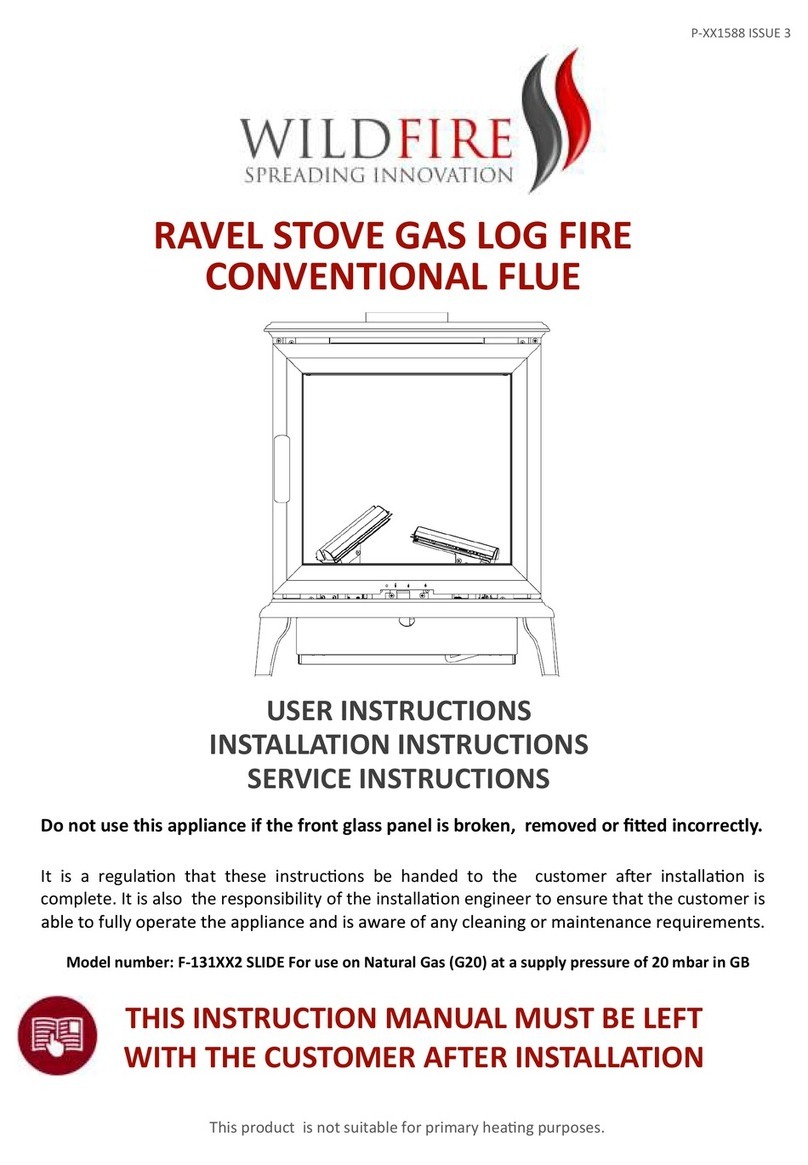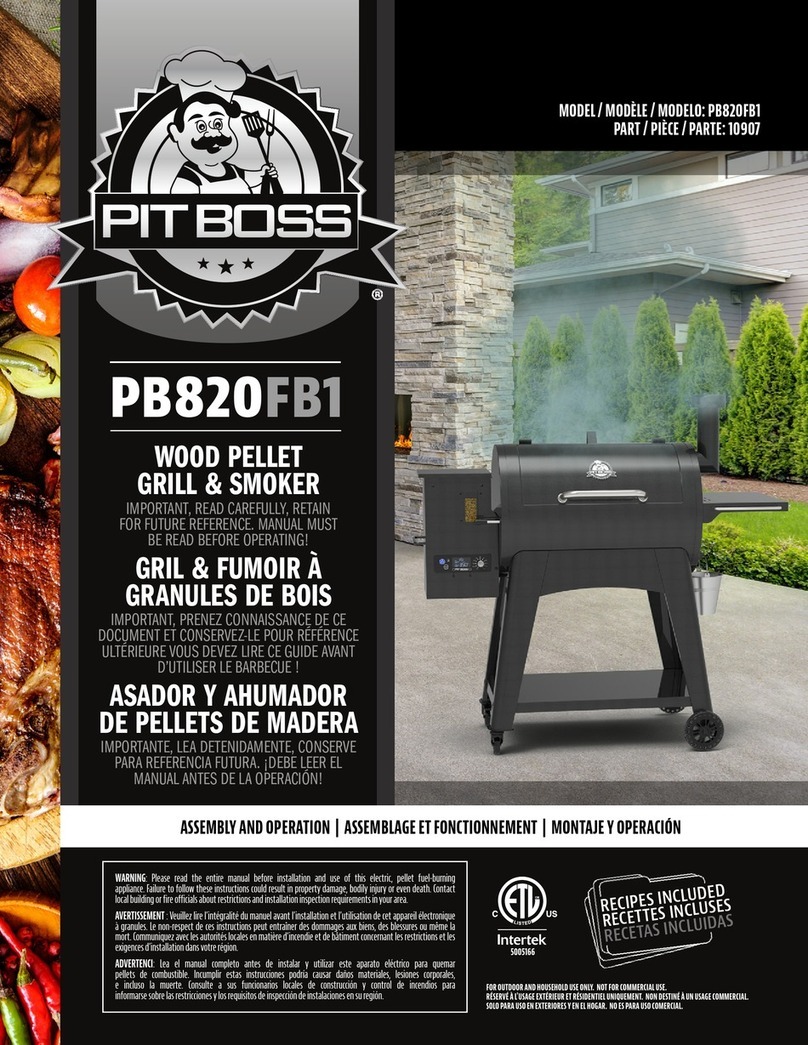Installation instructions
Ensure that the floor has sufficient load bearing capacity.
Fit a load bearing plate if necessary.
To ensure that your chimney meets the required specifications it must: -
- be at least 5 metres high
- have no bends sharper than 45 degrees
- be swept clear of any obstructions by a qualified chimney sweep
- terminate at least 1 metre above any roof ridge
- have an internal cross-section of between 0.018m2and 0.14m2
- be free from sources of leakage
- be connected only to the one appliance i.e. not a shared flue system
- be well insulated, or have a wall thickness of at least 100mm
- Please note this stove has had its secondary air supply modified with a
permanent 14mm supply.
Place the stove on a solid non-combustible hearth extending 300mm at the front of the
stove, 150mm either side of the stove and 50mm at the rear. The hearth must have a
thickness of at least 12mm. The maximum hearth temperature attained during testing
was 78.6°C (Refer to document J of the UK Building Regulations)
Ensure there is a permanent air entry opening or openings with a total free area of at
least 550mm2per kW of appliance rated output above 5kW,
ie 2kw x 550 mm2=1100 mm2.
When installing any air inlet grilles ensure they are positioned so they are not liable to
blockage.
Note: The Stove must not be installed in a room with an extractor fan operating.
Operating Instructions
Fuels suitable for use in your Carron Stove: -
Wood – logs (no larger than 225mmx75mmx75mm) should be dried for at least a year
prior to burning, for other fuels please contact the manufacturer. The stove is suitable
for intermittent operation and we recommend a refuel time of 1 hour.
Fuels unsuitable for use in your Carron Stove: -
Petroleum Coke – this burns with an extremely high heat and its use will cause damage
to the stove.
Household Waste – can produce dangerous fumes and should not be burnt in the
stove. No liquid fuels to be used on this stove, please remember that this stove is not
an incinerator.
Lighting the stove for Woodburning
Please note that the first fire you light in your stove should be small. This will prevent
possible damage to the stove.
To establish clean burning, it is important to get the appliance hot as quickly as
possible and these instructions must be followed. Clean burning can be achieved with
the following regime:-
Open primary and secondary air controls to maximum
Light a double-handful of kindling with a couple of firelighters leaving the door open
5-10mm.
Allow these sticks to become well-alight before :-
After about 8 mins, add two small sized logs (each about half the size of a "standard" 9
inch log). Let these burn well and after another 8 mins approx, add a normal fuel load of
two 9 inch logs and leave the door open for a further 3 mins. You may now operate the
stove as normal.
In normal operation, keep the primary air closed and control the burning rate (output)
with the secondary air control
Do not leave the stove unattended during lighting. After the ignition procedure is
complete, the stove must not be operated with the door open.
Refuelling
Following refuelling the door must reamin open by 5-10mm for 5 minutes with the
primary air control open. This ensures a clean burning is achieved. Following this 5
minutes the door and the primary air control should be closed and the secondary air
control to be set as required.
Always allow a bed of embers to become established on the grate. There is normally no
need to de-ash the grate, simply gently break up the nearly burnt-out logs with the
refueled logs when placing the new fuel on the fire.
If there is insufficient burning material in the fire bed to light a new fuel charge,
excessive smoke emission can occur. Refuelling must be carried out onto a sufficient
quantity of glowing embers and ash that the new fuel charge will ignite. If the fire bed is
too low or cool, suitable kindling must be used to relight fires.
Do not fill the stove to a level higher than the bricks. The maximum amount of fuel
specified for this manual should not be exceeded, overloading can cause excess
smoke. Operation with the door open can also cause excess smoke. The appliance
must not be operated with the air controls or dampers doors left open except as
directed in the instructions. Do not leave the fire unattended until the new fuel added
has ignited.



























